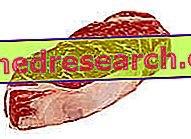The maturation is a natural chemical-physical process, which occurs spontaneously in the skeletal muscles of the animals just felled, gradually transforming them into flesh. For this reason, before being offered to the consumer, the meat is left to mature (to break) and soften for a few days.

Particularly long maturation times are also required for game (black meats), while white meats (guinea fowl, chicken, rabbit, turkey) and those of particularly young animals (lamb, kid and calf) require much shorter time (0 -72 h). In fact, young animals of small size require lower maturation periods than those required for the meat of large-sized animals.
Regardless of the size of the animal and other factors, the duration of this process is inversely proportional to the temperature at which it is performed; this means that the higher the temperatures, the lower the maturing issues, and vice versa.
The limit of hanging is that it takes time, therefore money. Therefore, the food industry is particularly attentive to all possible solutions to reduce the aging time, often with damage to the flavor and tenderness of the product. In particular, some rapid maturation techniques have been developed at temperatures of 18-20 ° C, in which - to avoid excessive drying, the development of microorganisms and the consequent putrefaction - the environment is humidified and treated with sterilizing means such as ultraviolet radiation.
The muscle, immediately after the slaughter, is not edible due to its extreme hardness. During the maturation some biochemical processes take place which modify the structure of the meat making it edible and increasing its flavor, with a pleasant sensory perception by the consumer.
After the death of the animal we can distinguish three phases, which occur in all types of animals, including fish; however, their duration varies according to the size (they are much shorter in small animals):
- Pre rigor: from a few minutes to half an hour after the animal's death. Anaerobic metabolism remains in the cells which leads to the transformation of sugars into lactic acid; for this reason there is a lowering of the pH which passes from 7 to 5.6 - 5.7. As a result, the carcass stiffens and the meat is leathery and tasteless.
- Rigor mortis: from 3-6 hours up to 24 hours after the death of the animal; in the absence of ATP, actin and myosin bind irreversibly, the muscle shortens and the flesh becomes noticeably stiff, making it particularly hard and luscious.
- Post rigor: tenderizing phase due to the proteolytic action of enzymes on myofibrillar proteins; the meat returns soft and becomes edible, in parallel the pH gradually increases to values close to neutrality. During maturing it is important that the pH of the meat does not shift towards alkalinity, as a condition favoring the development of putrefactive reactions.



